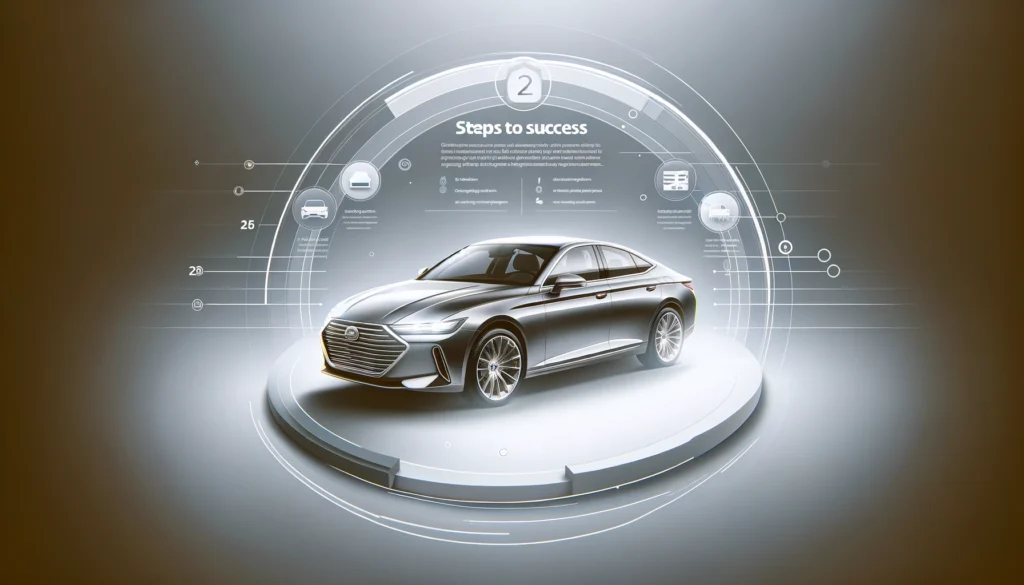Table of Contents
The bittersweet moment of parting ways with your car has arrived, but the prospect of securing top dollar in return is undeniably gratifying. Regardless of the avenue you choose to sell your used car—be it to an individual, a dealer, online, or with a classic sign in the front window—ensuring a successful and lawful transaction demands a bit of groundwork. Here are some comprehensive steps to ensure both parties walk away content.
1. Choose which way to sell your used car
- Trade in Your Car: Selling your car to a dealer through a trade-in is a convenient option. However, keep in mind that the offered price may be lower compared to a private sale.
- Sell It Yourself: Opting for a private sale often yields a higher selling price. This method requires more effort on your part, from advertising to handling negotiations.
- Use Instant Cash Offer: Several online platforms offer instant cash offers for your vehicle. While this is a quicker process, it’s crucial to compare offers to secure the best deal.
2. Find Your Car’s Value:

Before setting a price, determine your car’s market value. Research online platforms, consult pricing guides, and consider factors like the vehicle’s condition, mileage, and any added features.
The next crucial step in the process is understanding the value of your car, and there’s a handy tool to guide you on how to sell your car online effectively. Utilizing Yourcarintocash, you can easily check the worth of your vehicle in the private market, for a dealer sale, or as a trade-in. Additionally, there’s an Instant Cash Offer tool, providing an opportunity for dealers to make an offer on your car. This essentially establishes a minimum value for your asking price. Assessing this information allows you to weigh the potential additional earnings from a private sale against the time and effort involved in advertising, showcasing, and eventually selling your vehicle. If you’re looking for a quick sale, the Instant Cash Offer for your used car might be a compelling option.
3. Get your car in “showroom ready” condition:
Invest time in cleaning and tidying up your car’s interior and exterior. Small maintenance tasks, like fixing minor issues and ensuring a smooth-running engine, can enhance its appeal.
Once you’ve figured out how to sell your car and gathered all the needed papers, it’s time to make it look great for potential buyers. You can either get it professionally cleaned or spend some time yourself vacuuming, cleaning the carpets, wiping the mirrors, washing the outside, and making the tires look shiny.
Don’t forget to take your car for an oil change. If your tires or brakes are getting old, it’s a good idea to replace them now. Ask the mechanic to fix any lights that aren’t working and replace windshield wipers that are not doing their job. Also, plan to fix any cracks in the windshield or any scratches or dents. Making your car look and run well can help attract more buyers.
4. Documents To Gather To Sell Your junk Car:

Collect essential documents, including the title, maintenance records, and a bill of sale. Check your local regulations for any additional paperwork required.
Title:
The title is like a special ownership paper for your car. Once you finish selling your car and have the money, you sign the title to give it to the new owner.
Odometer Disclosure:
If your car is less than 10 years old, you have to tell the buyer how many miles it has. In some places, you only write this on the title. In others, you might need an extra paper. Check with your state’s DMV to know what papers you need.
Warranty or As-Is Paper:
If your car has a warranty you can pass on, you might get more money. Share the papers and the company’s contact info with the buyer. If your car isn’t under warranty, write down that you’re selling it “as is.” This means the buyer is responsible for fixing anything after buying.
Bill of Sale:
This paper talks about how the sale will work. It includes details like your car’s make and model, how many miles it has, the price, and when the buyer gets the car. Both you and the buyer sign it, and it’s good to get it notarized.
Service Records:
Show proof that your car is in good shape. Share records that prove you took good care of it.
Vehicle History Report:
This report tells the car’s story. Was it in an accident? Did it go through a flood? This info is important, especially if you’re not the first owner. It builds trust with the buyer.
Other Documents:
Some states might need more papers. For example, California wants a smog certificate. If you use Private Auto to sell your junk car, it gives you the right papers for your state. You and the buyer can sign them using the app.
Advertising Tips and Tricks
Craft a compelling ad highlighting your car’s key features, such as its make, model, mileage, and any noteworthy extras. Include clear and high-quality photos to attract potential buyers.
6. Tips for Price Negotiations:
Be prepared for negotiations. Set a realistic but slightly higher asking price to provide room for negotiation. Know your car’s value and be willing to compromise within a reasonable range.
When getting ready for negotiations, whether selling your car privately or to a dealership, it’s a good idea to visit a few dealers and get offers. Combine this information with what you’ve learned about your car’s value from sources like Kelley Blue Book or Yourcarintocash to guide your discussions with potential buyers.
Come to the negotiating table with the lowest price you’re willing to accept in mind and be ready to make counteroffers.
To kick off the conversation, let the potential buyer suggest a number. If it works for you, you can decide whether to push for more or proceed with the sale. However, if the offered amount is too low, counter with a slightly higher price, just above your minimum acceptable amount. Importantly, be prepared to walk away if you can’t reach a fair deal with the other party.
7. Paperwork Checklist:
Ensure you have all necessary paperwork ready for the sale. This includes the title transfer, bill of sale, release of liability, and any required emissions or safety inspection certificates.
When selling your car independently, having the vehicle title is crucial for completing the sale. Make sure to familiarize yourself with your state’s regulations regarding title transfer, and inquire at your local motor vehicle division office for guidance.
In many states, the buyer typically needs to go through the following steps to transfer the vehicle:
- Retitle the Vehicle: The buyer has to get the title of the vehicle transferred to their name.
- Register the Car: The buyer needs to register the car in their name.
- Pay Transfer Fees and State Taxes: There are transfer fees, including state taxes, that the buyer is responsible for paying. This process is often carried out at the DMV.
All three of these steps can usually be completed at a local Department of Motor Vehicles (DMV) office. If the buyer is from another state, they may perform these steps when they return home.
It’s important to note that many states require the seller to provide the buyer with a recent smog check or state inspection certificate, demonstrating that the vehicle has passed emissions tests before the ownership transfer. Make sure to have this documentation available at the time of sale to ensure a smooth process. Always check your state’s specific requirements to ensure compliance.
8.Payment Options:
Decide on the payment method before finalizing the sale. Common options include cash, certified check, or an online payment platform. Be cautious of potential scams and ensure a secure transaction.
Selling a car involves a mix of practicality, negotiation skills, and attention to detail. By following these steps, you can increase the likelihood of a successful and satisfactory transaction for both you and the buyer.
Related Articles:
What Are The Documents Required To Sell A Junk Car For cash
Don’t Miss Out on the Fastest Way to Sell Your Car!
Tips for selling larger vehicles like trucks, vans, and SUVs
How to Sell Your Car for Parts – Everything You’ll Need To Know.


